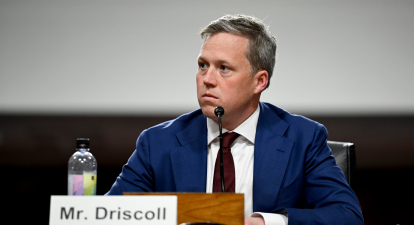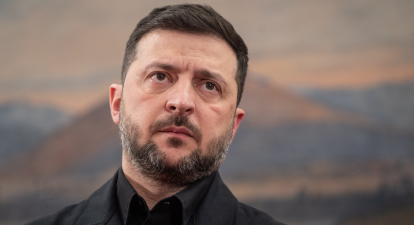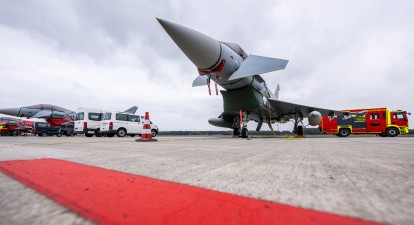
A Eurofighter Typhoon fighter jet, jointly developed by the UK, Germany, Italy and Spain, is parked at Münster-Osnabrück Airport, Germany, on October 8, 2025. Photo by Getty Images
The European defence industry is experiencing a renaissance amid a growing military threat. But the sector faces a number of challenges that could limit its development. Can Europe overcome them to create an independent and effective defence industry? Highlights from The Economist’s analysis
Buy an annual subscription to six Forbes Ukraine magazines for the price of four issues. If you value the quality, depth, and power of real-world experience, this subscription is for you.
Europe's defense companies are experiencing a period of significant growth thanks to new investments and increased attention to security, especially since Donald Trump's return to the political arena.
After the start of the full-scale war in Ukraine and the increased threats from Russia, European countries decided to significantly increase their defense spending. As a result, the growth in the value of European defense companies became obvious: the value of shares of companies such as Germany's
Popular Category Companies Date Today “20–30% cheaper than official prices.” The largest car dealers are against maintaining benefits for electric cars. Who makes money on imports?
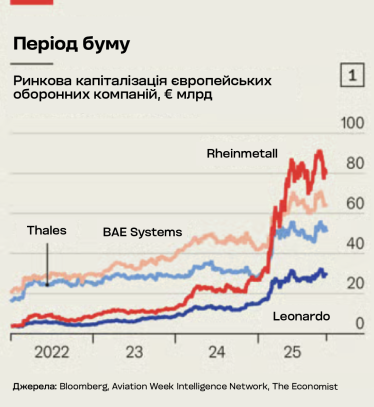
Market capitalization of European defense companies Rheinmetall, BAE Systems, Leonardo and Thales.
Overall, Europe will spend $180 billion on defense this year, double what it spent in 2021 and more than the U.S. This figure is set to rise as NATO countries agreed in 2023 to increase defense spending to 3.5% of GDP by 2030.
While this allows Europe to reduce its dependence on America, the real challenge for the European defense industry is the scale and speed of production of modern weapons.
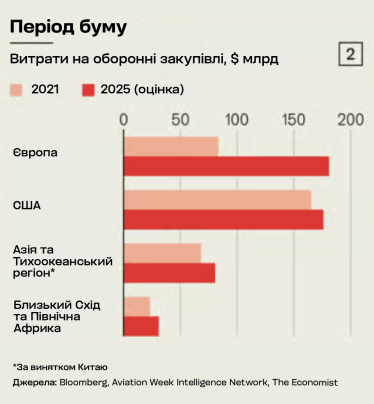
Defense procurement spending in Europe and the United States.
In the process, European leaders plan to revamp the continent’s defense industry, which has suffered from decades of underinvestment. Europe relies on American weapons: between February 2022 and September 2024, American weapons accounted for a third of European procurement spending, according to the International Institute for Strategic Studies. But there is a risk that if there is a simultaneous need to replace weapons, the United States will prioritize replenishing its own arsenals.
Will Europe's defense industry be able to cope with the challenges?
In its March report “Readiness 2030”, the European Commission notes that European companies are unable to produce defense systems in the required volumes and speed, and calls for a significant increase in production.
In parallel, the Peacekeeping Plan, published in October, sets out the EU's priorities for the defence sector for the next five years. However, overcoming the problems of fragmentation, slow procurement and lack of innovation will be difficult, and the risks extend beyond investors.
Three main problems of the EU defense industry
Fragmentation
European defense companies are significantly smaller than their American competitors. For example, Rheinmetall, Germany’s largest defense company, is projected to generate just €10 billion in revenue in 2024, just a sixth of Lockheed Martin’s revenue.
One reason for this is the policy of European governments, which favor national manufacturers. Such fragmentation does not allow the creation of large companies capable of competing with American corporations in the production of high-tech weapons.
For example, investment in military technology research and development in Europe was only €13 billion in 2024, while in the US it was $148 billion, according to the Kiel Institute.
European companies have succeeded in producing artillery shells, howitzers and tanks, but serious problems arise with the development of more complex technologies: rocket artillery, long-range missiles and air defense systems, according to the Kiel Institute.
European leaders recognize the need for mergers to achieve scale and improve competitiveness. Rheinmetall has already announced its purchase of the warship manufacturer Lürssen. However, governments are reluctant to relinquish control of key defense companies, making it difficult to implement high-level mergers.
Increasing cooperation on major defense programs could be another possible solution to the problem of fragmentation. However, joint programs have had mixed results. While the Eurofighter Typhoon, jointly developed by the United Kingdom, Germany, Italy, and Spain, has been successful, the Future Combat Air System project, which aims to create a new European fighter jet supported by drone swarms, is currently under threat due to disputes between France and Germany.
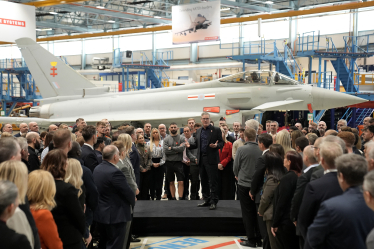
British Prime Minister Keir Starmer stands in front of a Eurofighter Typhoon fighter jet during a visit to BAE Systems in Warton, United Kingdom, October 28, 2025. Photo by Getty Images
Slow procurement processes
The European defense industry faces a large number of bureaucratic delays in procurement processes, which limit the ability of companies to respond quickly to the needs of armies. Procurement processes often take many months, and sometimes even years.
This bureaucratic inertial process prevents defense companies from quickly scaling up production and adapting to new threats. Moreover, without clear and long-term contracts, defense companies cannot make the necessary investments in expanding production.
This creates great uncertainty for companies seeking to scale production in an unstable market.
To address this problem, some companies are looking to move to more flexible approaches, focusing on future military needs rather than specific orders. An example is Nordic Air Defence, which does not wait for orders from governments, but tries to anticipate needs and promptly meet them.
Insufficient number of innovative defense startups
The European defense industry suffers from a lack of sufficient startups and innovative companies to compete with new defense players in the US, such as Anduril or SpaceX.
For Europe to continue to independently grow its defense industry, it needs to develop innovative startups that can offer new technologies and solutions. The conflict in Ukraine has shown the importance of drones on the battlefield and satellites in space.
The problem is that European capital markets are not as deep and liquid as American ones, and are less likely to support startups, making it difficult for such companies to raise the necessary investment to grow.
The sky is the limit: opportunities for defense startups and innovation
Despite the challenges, Europe is showing some positive results. Several European startups have already achieved significant success.
For example, German company Helsing and Portuguese Tekever, which specialize in drones, have already become defense “unicorns.” They are attracting the attention of investors due to their innovations in the production of drones, which are now becoming one of the most important elements of modern warfare.
And while funding for startups in the early stages is available, there is still a lack of capital to scale and develop them. However, investor interest in the defense sector is growing. Banks that were previously unwilling to finance defense startups are now actively looking for new investment opportunities, says Karl Rosander, head of Nordic Air Defence, a startup developing interceptor drones.
The conclusion that experts point to is that Europe has great potential for developing its defense industry, but to do so it needs to overcome problems related to market fragmentation, bureaucracy, and the lack of a sufficient number of innovative companies.
At the same time, support for startups, greater cooperation, and investment will help Europe create an independent and competitive defense industry that can reduce dependence on the US and protect the continent in the event of growing global threats.
Materials on the topic

Category World Date October 08 “We have paved the red carpet for the Fire Point plant.” How is Denmark investing in Ukraine's military-industrial complex? Interview with Danish Minister of Industry Morten Bødskov

Category World Date September 26 “A laughing stock to the world.” Europe has lost its relevance. Why are its leaders unable to respond to modern challenges? Eight conclusions The Telegraph

Category World Date September 24 “Putin is acting according to Lenin's rule.” Russia is increasing pressure on Europe with provocations in Poland and Estonia. What are seven other pain points on the NATO map?
